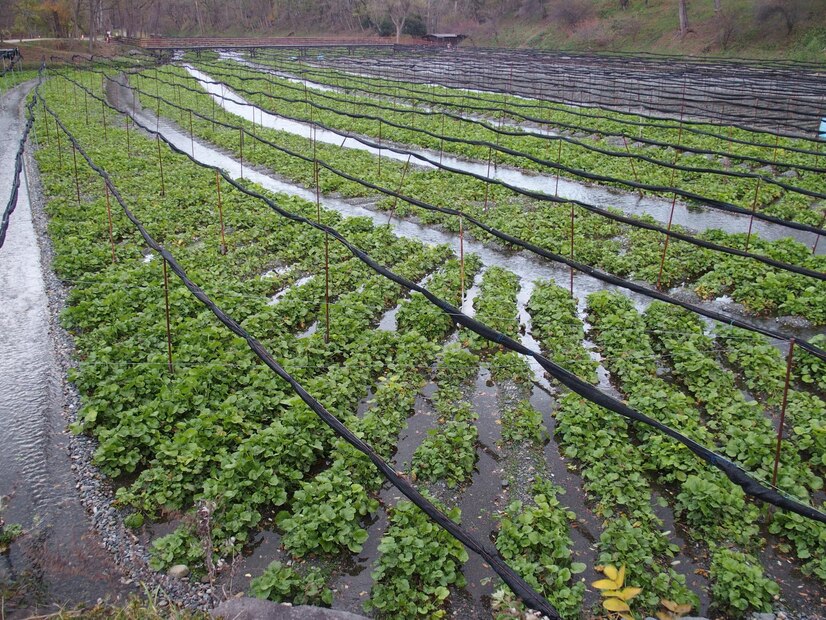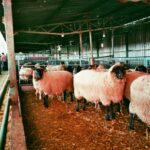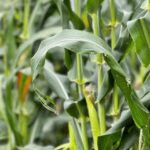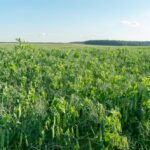Flood irrigation, one of the oldest and most widely used methods of watering crops, involves applying water across the surface of a field to allow it to soak into the soil. While it’s a popular method due to its simplicity and low initial cost, flood irrigation can be inefficient if not managed properly. However, by implementing certain best practices, farmers can significantly improve water use efficiency, crop health, and soil conservation.
This article explores the best practices for flood irrigation to help farmers make the most of this traditional technique in modern agricultural settings.
What Is Flood Irrigation?
Flood irrigation involves releasing water onto a field, either by gravity flow from canals, ditches, or pipes, and allowing it to flow naturally across the surface. It is commonly used for crops like rice, sugarcane, pasture, and some fruit orchards. While the method is straightforward, it poses challenges like water wastage, runoff, and uneven distribution—issues that can be reduced with the right techniques.
Key Benefits of Flood Irrigation
- Low setup and maintenance costs compared to pressurized systems.
- Suitable for flat or gently sloping fields where gravity can move water efficiently.
- Effective in areas with abundant water sources such as rivers or canals.
Best Practices for Efficient Flood Irrigation
1. Field Levelling for Uniform Water Distribution
Leveling your fields is one of the most critical steps in improving flood irrigation efficiency. Uneven fields can lead to over-irrigation in some areas and dry patches in others, leading to waterlogging, root diseases, and poor crop performance.
- Laser leveling or contour leveling techniques can ensure precise gradients.
- Well-leveled fields improve infiltration and reduce runoff and erosion.
- Proper slope (typically 0.05% to 0.2%) helps control the flow rate and ensures uniform coverage.
2. Design Efficient Irrigation Layouts
Designing a well-structured irrigation layout can help direct water more efficiently across the field.
- Use border, basin, or furrow systems based on crop type and field topography.
- Basin systems are good for orchards or rice fields.
- Furrows work well for row crops like maize or vegetables.
- Border strips suit pasture or forage fields.
- Ensure that channels and ditches are properly lined to prevent seepage and water loss.
3. Schedule Irrigation Based on Crop Needs
Avoid flooding fields based on fixed intervals. Instead, monitor soil moisture and crop needs to determine the optimal irrigation timing.
- Use soil moisture meters or tensiometers to assess when the field needs water.
- Pay attention to crop stages—young seedlings and flowering stages are more sensitive to water stress.
- Over-irrigation not only wastes water but also leaches nutrients and encourages weed growth.
4. Use Check Structures and Gates
Installing check dams, siphons, or gates allows better control over water flow, especially in larger or sloped fields.
- Helps regulate the volume of water entering different sections of the field.
- Minimizes water loss due to uncontrolled flooding.
- Prevents erosion and protects soil structure.
5. Implement Soil Conservation Techniques
Flood irrigation can contribute to soil erosion and compaction if poorly managed.
- Plant cover crops during off-seasons to protect topsoil.
- Use mulching to reduce evaporation and improve water infiltration.
- Maintain vegetative strips or grassed waterways to reduce runoff and sediment loss.
6. Maintain Irrigation Channels Regularly
Clogged or broken channels can significantly reduce irrigation efficiency and lead to waterlogging or uneven coverage.
- Clean canals and ditches before each irrigation cycle.
- Repair leaks, collapsed banks, or blockages promptly.
- Line channels with concrete or plastic to reduce seepage and improve flow control.
7. Train Laborers and Monitor Performance
Efficient flood irrigation requires trained personnel who understand water flow dynamics and field-specific challenges.
- Train farm workers on how to start, manage, and stop irrigation cycles.
- Monitor water depth, infiltration time, and runoff during irrigation events.
- Keep records to identify patterns and areas for improvement.
Environmental and Economic Considerations
While flood irrigation is cost-effective, it’s important to balance its use with sustainable practices:
- In water-scarce regions, poor flood irrigation can deplete resources and reduce long-term viability.
- By increasing water-use efficiency, farmers can reduce pumping costs and improve yields.
- Implementing best practices can lead to better soil health, less nutrient leaching, and higher crop uniformity.
When to Consider Alternatives
Flood irrigation may not be suitable in the following situations:
- Fields with steep slopes or high infiltration rates.
- Water-scarce or drought-prone areas.
- Where precision irrigation is needed, such as for horticulture or drip-sensitive crops.
In such cases, transitioning to drip or sprinkler irrigation systems may be more efficient and sustainable.
Flood irrigation remains a viable method for many small- to medium-scale farms, particularly when water is abundant and terrain is suitable. However, without careful planning and management, this traditional method can lead to inefficiencies and environmental issues. By adopting best practices—such as field leveling, efficient scheduling, channel maintenance, and using check structures—farmers can maximize water use efficiency and improve crop productivity.
With smart management, flood irrigation can continue to be a sustainable, effective solution in modern agriculture.
Join 'Farmers Mag' WhatsApp Channel
Get the latest Farming news and tips delivered straight to your WhatsApp
CLICK HERE TO JOIN






